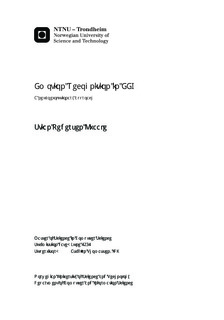| dc.description.abstract | Ever since the invention of EEG have constant attempts been made to give meaning to the oscillating signal recorded. This has resulted in the ability to detect a wide range of different psychological and physiological phenomenon. The goal of this thesis is to be able to recognize different emotions in EEG by the use of a computer and artificial intelligence. Emotions are an especially interesting phenomenon because of the huge impact they have on humans on the daily basis. They constantly guides and modulates our rationality, and is thus in some sense an important part of the definition of human rationality, which again plays an important role in how we behave intelligently and especially how we behave intelligently when interacting with other humans. Machines that interact with humans do however not base their decisions on a rationality that incorporates live human emotions. The effect of this mismatch in rationality between humans and machines results in unwanted behaviour from the machines, and is something most have experienced. The system we propose in this thesis could be used to allow machines to incorporate an interpretation of human emotions in their principles of rationality, in the form of a recognized two-dimensional model of emotions, which could result in a more intelligent interaction with humans. We further restricted our system to the hardware limitations of the commercially available Emotiv EPOC EEG headset, in order to get an indication of the commercial value and general implications of our method. Both unsuccessful and successful systems with similar goals have previously been described in the literature. These systems typically rely on computationally expensive feature extractions, which make them less attractive when a relatively quick response is needed. Moreover, the act of choosing what methods to use in order to extract features entails a degree of subjectivity from the creator, which becomes clear by looking at the share variety of completely different methods used in the different systems. Our system effectively minimizes both of these issues by presenting the signal as it is, expressed in the frequency domain, to an artificial neural network trained by a neuroevolutionary method called HyperNEAT, with promising results. This highlights the importance of using a method that is truly in line with nature of the problem. | nb_NO |

